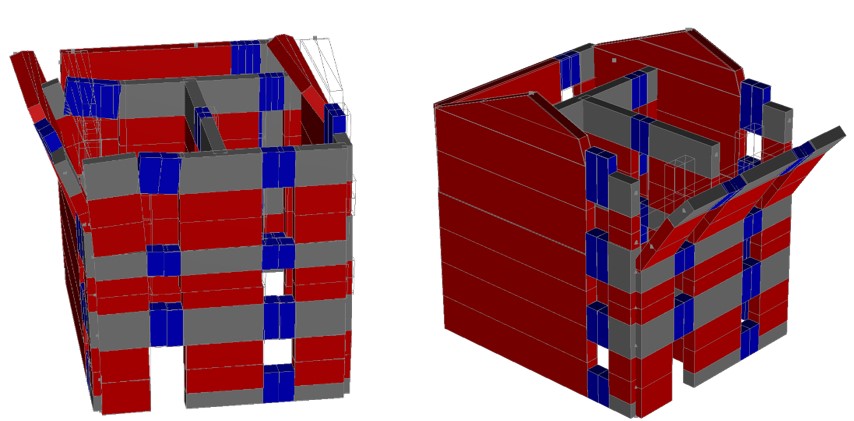The majority of European heritage consists of masonry buildings, which are among the most vulnerable structures when subjected to seismic loading, as confirmed by recent events. This typology is prone to damage even for moderate-intensity earthquakes, to which also Switzerland is exposed (e.g., Basel 1356, and Valais 1855). For this reason, extensive research in this field is necessary for both unstrengthened and retrofitted masonry structures. Furthermore, the development of reliable tools capable to predict the structural behavior of such systems is of utmost importance. A widely used approach for the seismic assessment of existing buildings is the Equivalent Frame Modelling (EFM). Further, the introduction of the macro-element, which captures both in-plane and out-of-plane responses, has made EFM popular in the seismic analysis of historical masonry. The recently proposed three-node, three-dimensional macro-element describes the main features of the in-plane and out-of-plane behavior of masonry walls, including second-order geometrical effects and coupled shear/flexural responses. This new element is implemented in the open-source software OpenSees; therefore, it is freely and openly available to the research community.
The search for more advanced tools to be employed in the analysis of masonry buildings is mainly motivated by the observed influence of the type and quality of masonry as well as the mechanical behavior of diaphragms and connections, on their seismic response. Moreover, the adoption of simplistic hypotheses such as the linear behavior structural components can impact negatively the response analysis of masonry walls subject to seismic loads. In this regard, this research advances the development of macro-element modeling of unreinforced masonry buildings and retrofitting strategies aiming at the vulnerability reduction of masonry structures. A current investigation includes the analysis of the out-of-plane response of multi-leaf masonry walls, with a particular focus on failure mechanisms such as the separation of the leaves.

- Article:
- A three-dimensional macroelement for modelling the in-plane and out-of-plane response of masonry walls [journal link]
- Equivalent-frame modeling of two shaking table tests of masonry buildings accounting for their out-of-plane response [journal link]
- Uncertainties in the seismic assessment of historical masonry buildings [journal link]
- Numerical simulation of unreinforced masonry buildings with timber diaphragms [journal link]
- Shake-table test on a historical masonry aggregate: prediction and postdiction using an equivalent-frame model [journal link]
- Source code: [source code link]